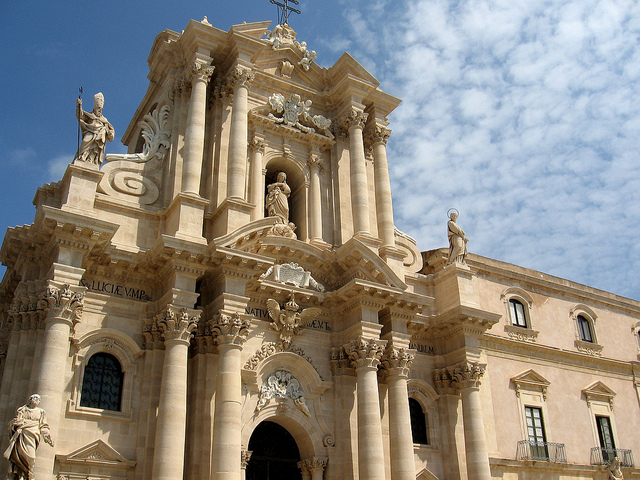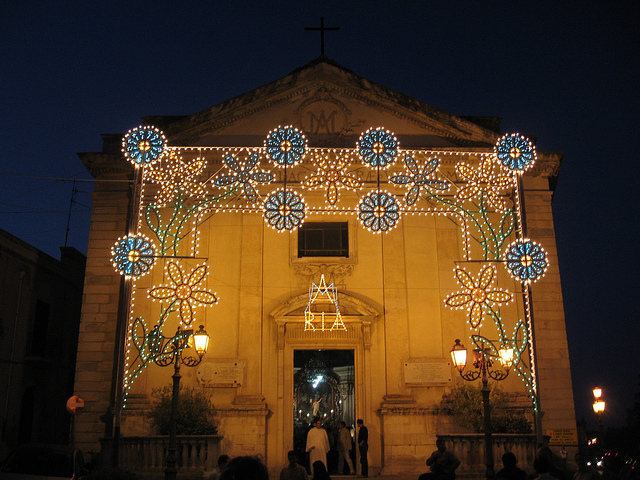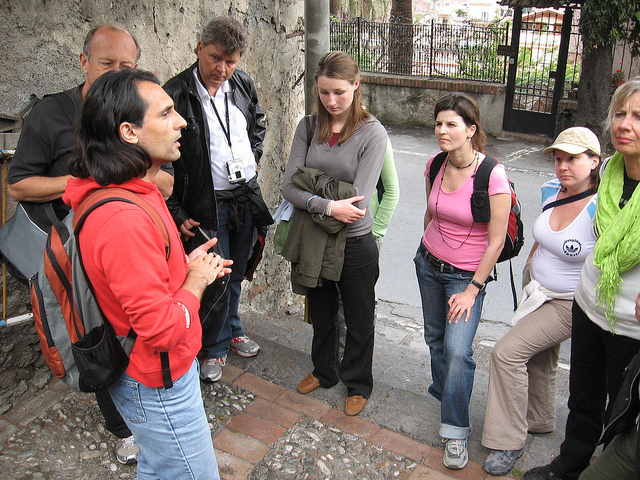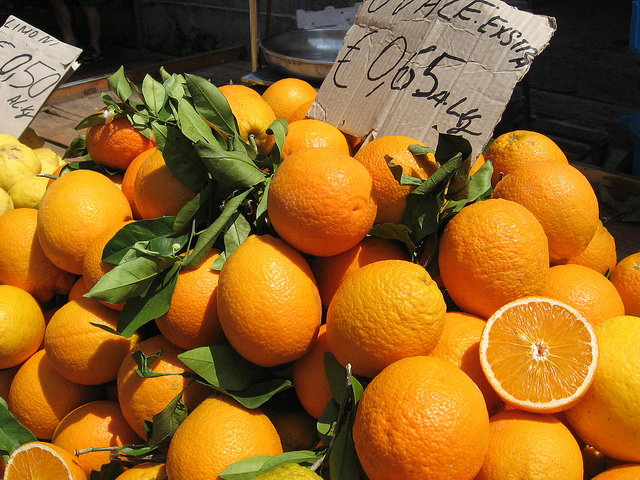Many of the original stones of the Greek Theatre were taken at the order of Emperor Charles V in the 1500s in order to build the walls around Ortygia, an island that forms part of downtown Siracusa. Every year in the months of May / June a theatre festival is held in Siracusa’s Greek Theatre that features Greek Tragedies as part of the Teatro Greco di Siracusa. This year’s festival theatre is scheduled for May 10 to June 25, 2007. Surrounding the Greek Theatre are rocks with cavities that were used for grain storage as well as burial sites.
We passed by the “Altar of Hieron II”: a sacrificial site where 400 bulls were sacrificed at one time. In addition to ancient Greek treasures, this archeological zone also holds Roman ruins: the Roman Amphitheatre was used for beastly fights. Peppe explained that these were not professional gladiators, but rather slaves that were being made to fight wild animals, mostly dogs. In antiquity Sicily was often used as a prison site, and prisoners were also often used in these spectacles. The underground holding areas and corridors for the animals and the gladiators can still be clearly seen.

The Roman Amphitheatre – location of many gladiator fights
After our visit to this extensive archeological zone we got into our vehicles and drove downtown. We parked our car on the Piazza della Posta next the waterfront and two minutes away we had a chance to explore the local market. All the local delicacies were awaiting, from all different kinds of fish to squid to shellfish to local vegetables and fruits. The displays were definitely a feast for the eyes, (for the nose not so much, at least the fishy part…).

Ready to make fish soup?
From there we strolled past the Temple of Apollo on the Piazza Pancali, which provides the entrance to the island of Ortygia. This ancient temple, dating back to the 6th century B.C., was discovered in 1860 in the old Spanish army barracks. Through narrow streets with many Baroque buildings we arrived at the Piazza Duomo which features Syracuse’s cathedral, dedicated to Santa Lucia.

Photogenic squid
An imposing building with a beautifully detailed façade, this building impresses not just because of its size, but because of the ancient interior Greek columns that used to form part of a monument dedicated to Athena. Peppe pointed out that some of the columns are standing at a slight angle as the result of a major earthquake.

The impressive Duomo of Siracusa
These columns also date back to the 6th century B.C. and are some of the most well-preserved ancient Greek columns in the world. The Duomo evolved from being a temple to becoming a Christian Church, at one point it became a Muslim mosque and today’s incarnation is a stunning example of Sicilian Baroque architecture.

Fountain in downtown Siracusa
After all these explorations it was definitely time for lunch and Peppe guided us to a local restaurant, located in a beautiful courtyard off a small street that served simple local fish and pasta dishes. Vines were hanging down on us from trellises and the shade provided by the surrounding walls provided a welcome opportunity to cool off on this warm spring day.

Lunch in an old courtyard




